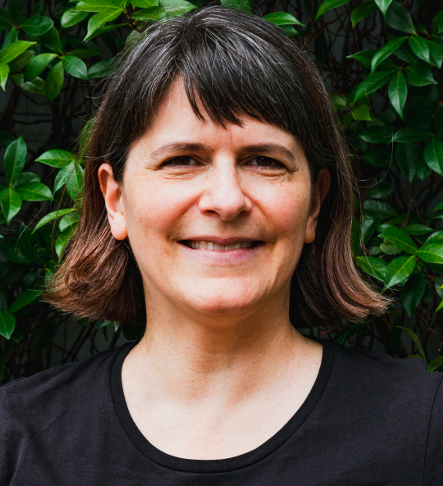
My Expertise
Combinatorics, graph theory.
Keywords
Fields of Research (FoR)
Combinatorics and Discrete Mathematics (excl. Physical Combinatorics), Analysis of Algorithms and Complexity, Applied Discrete MathematicsSEO tags
Biography
I started my academic career as an undergraduate at the University of Queensland, before obtaining my doctorate from the University of Oxford (1992). I held postdoctoral positions at the University of Leeds and at the University of Melbourne, before joining UNSW in 2002. Today I am a Professor and head of the Combinatorics group in the School of Mathematics and Statistics, UNSW Sydney. My research interests lie in asymptotic, probabilistic...view more
I started my academic career as an undergraduate at the University of Queensland, before obtaining my doctorate from the University of Oxford (1992). I held postdoctoral positions at the University of Leeds and at the University of Melbourne, before joining UNSW in 2002. Today I am a Professor and head of the Combinatorics group in the School of Mathematics and Statistics, UNSW Sydney. My research interests lie in asymptotic, probabilistic and algorithmic combinatorics. I was elected as a Fellow of the Australian Academy of Science in 2022. My work lies at the interface between discrete mathematics, theoretical computer science and probability, and has been applied by researchers in various areas including physics, computer science and statistics.
My Grants
- ARC Discovery Grant 2019 - 2021, C.S. Greenhill, B.D. McKay (ANU) and M. Isaev (Monash), Hypergraph models for complex discrete systems.
- ARC Discovery Grant 2014 – 2016, C.S. Greenhill and B.D. McKay (ANU), A new model for random discrete structures: distributions, sampling and counting.
- ARC Discovery Grant 2012 – 2014, I.M. Wanless (Monash), C.S. Greenhill and R. Aharoni (Technion), Extremal problems in hypergraph matchings.
- ARC Discovery Grant 2012 – 2013, D.A. Bright, C.S. Greenhill, A. Ritter and C. Morselli (Montreal), Illicit drug trafficking: the structure of illicit networks and implications for resilience and vulnerability.
My Qualifications
- D.Phil., University of Oxford, 1996.
- M.Sc. (Research) in Combinatorics, University of Queensland, 1992.
- B.Sc. (Hons) in Pure Mathematics, University of Queensland, 1991.
My Awards
- I was elected as a Fellow of the Australian Academy of Science in 2022.
- The Australian Academy of Science awarded the 2015 Christopher Heyde Medal in Pure Mathematics.
- In 2013 I held the June Griffith Fellowship for Academic Women in Leadership, awarded by the Faculty of Science, UNSW.
- I was awarded the 2010 Hall Medal by the Institute of Combinatorics and its Applications. This is an international mid-career medal for research in combinatorics.
My Research Activities
The study of random combinatorial objects, such as random graphs, is an attempt to discover what a "typical" graph with certain properties might look like (for instance, a given number of vertices and edges, or a given number of vertices and every vertex having a fixed degree). This work involves a mixture of combinatorial and probabilistic arguments, and the results obtained are asymptotic, meaning that they hold in the limit as the number of vertices of the graph tends to infinity.
A related area is asymptotic enumeration of various kinds of graphs. This means finding a formula for the number of graphs of interest which is closer and closer to the truth as the number of vertices tends to infinity. For sparse graphs the methods are combinatorial and often involve a probabilistic approach using switchings. For dense graphs the approach is quite different: we want to to know a particular coefficient of the generating function and proceed using complex analysis, evaluating integrals using the saddle-point method.
I am also interested in the design and analysis of randomized algorithms for graphs and other combinatorial structures, particularly Markov chain Monte Carlo algorithms for approximate sampling and/or counting. Here a Markov chain is designed with a given stationary distribution, for instance the uniform distribution on the set of all graphs with a given degree sequence. The aim is to prove that the Markov chain converges rapidly (i.e. in polynomial time) to this distribution.
My Engagement
Conference committees (recent)
- I was Director of 42ACCMCC, the 42nd Annual Australasian Conference on Combinatorial Mathematics and Combinatorial Computing, which was held at UNSW in December 2019.
- I was on the Programme Committee of the 2020 annual Australian Mathematical Society meeting.
Professional affiliations and service positions
- I am an Editor-in-Chief of the Electronic Journal of Combinatorics.
- I am the Chair of the Women in Mathematics Special Interest Group (WIMSIG) of the Australian Mathematical Society (2021 - 2022).
- I am a member of the Council of the Combinatorial Mathematics Society of Australasia (CMSA).
- I am on the Executive Committee and the Equity, Diversity and Inclusion Committee of the School of Mathematics and Statistics.
My Teaching
I teach a range of courses within the School of Mathematics and Statistics, from first year courses such as MATH1081 Discrete Mathematics to the Honours course MATH5425 Graph Theory.
I also developed an online Professional Development course for high school teachers (hosted by OpenLearning), covering the new Networks and Paths syllabus. I regularly take part in the School's Teacher's Professional Development workshops, delivering this material to teachers face-to-face.
Location
UNSW Sydney
NSW 2052, AUSTRALIA
The Red Centre
Room 5105